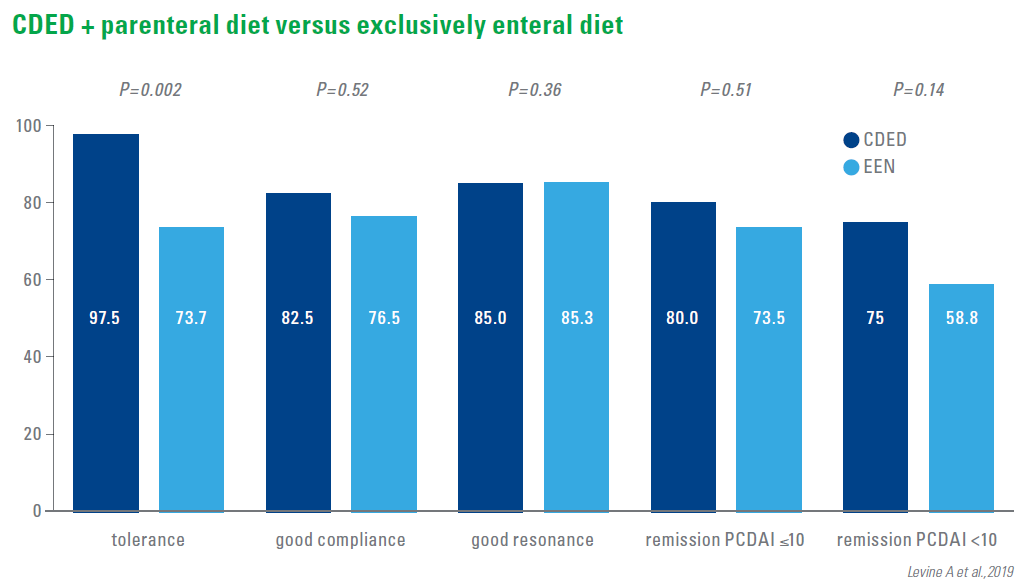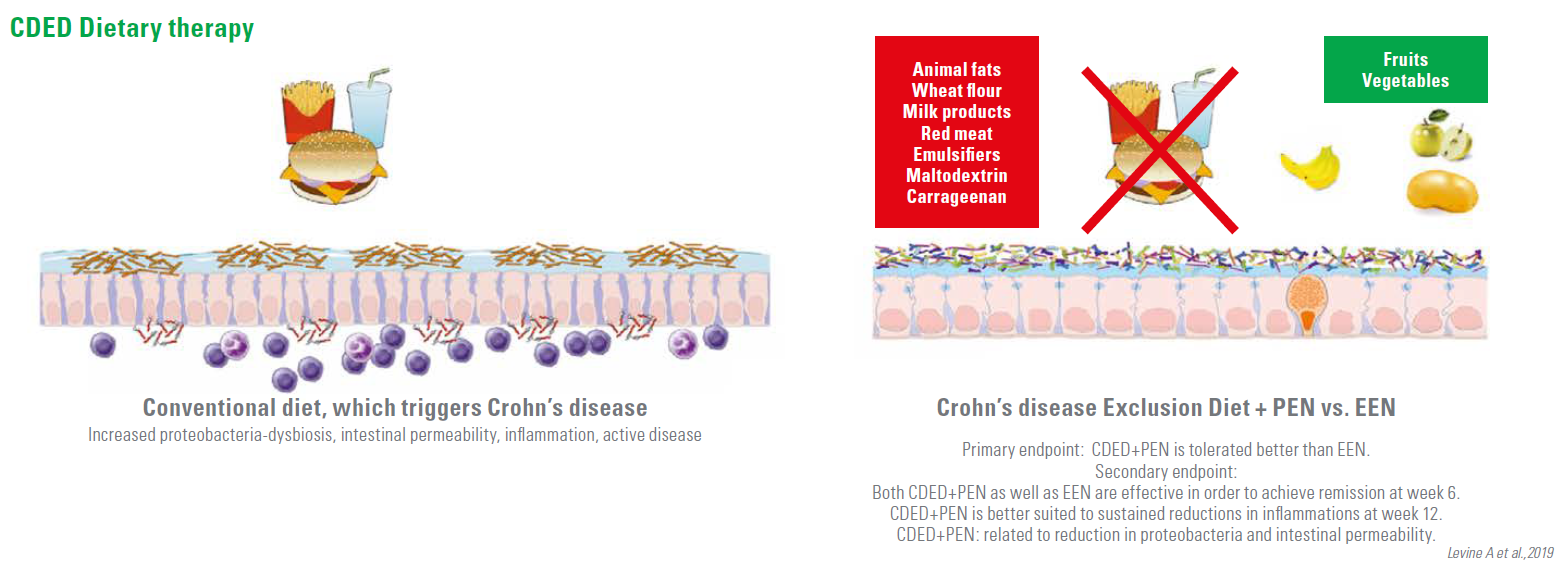Crohn's disease
Crohn’s disease: New treatment schema promises success
Exclusive enteral nutrition (EEN) is recommended for children with mild to moderately severe Crohn’s disease (CD), but the implementation of the same is challenging. EEN was compared with the CD exclusion diet (CDED), a whole-food diet coupled with partial enteral nutrition (PEN), designed to reduce exposure to dietary components.
A 12-week prospective controlled trial inflammatory bowel diseases (IBD) centres in Israel and Canada compared a CDED with 50% PEN diet for six weeks, followed by randomised CDED with 25% PEN for the next six weeks (Group 1) to EEN, or CDED with 25% PEN and reintroduction of a free diet for six weeks (Group 2). The PEN formula (“Modulen ®, Nestlé Health”) was given orally in both groups.
78 children with mild or moderately severe luminal CD, defined by Pediatric Crohn’s disease Activity Index (PCDAI) ≥10 and ≤40 and evidence for active inflammation with elevated C-reactive protein, were enrolled. Patients were seen at the beginning of the trial and weeks 3, 6, and 12. A telephone conversation by a dietician was performed as well.
Primary endpoint: Development of dietary tolerance. No deviation from the diet until week 6, defined as termination of the study. Secondary endpoint: Remission (ITT cohort) at week 6 (PCDAI value < 10) and corticosteroid-free ITT sustained remission at week 12 (ITT).

Four patients from group 1 withdrew from the study and were only recorded for the primary outcome.
Results
CDED+PEN was tolerated significantly better than EEN (97.5% or 73.6%)
Both diets were equally effective in inducing remission and reducing inflammations at
week 6
After 12 weeks, the sustained remission was significantly higher in the group that received CDED+PEN
Both diets showed similar changes in the faecal microbiome, which were connected to a
remission at week 6, but returned to the original values in Group 2
This data supports the use of CDED + PEN as a treatment to induce remission in children with luminal CD and mild to light activity.

